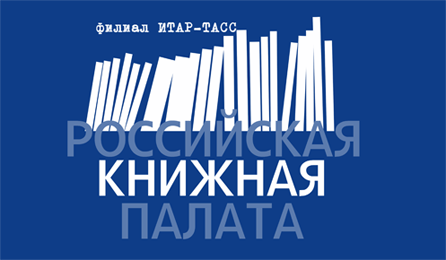Andreenkov S. N. Virgin Project of 1954 in Kazakhstan and Siberia: Dynamics of grain production // The Russian Peasant Studies. 2022. V.7. №3. P. 89-105.
DOI: 10.22394/2500-1809-2022-7-3-89-105
Annotation
The article aims at identifying features of grain production in Siberia and Kazakhstan during the campaign for developing virgin and fallow lands (second half of the 1950s) and subsequent decades of the Soviet and post-Soviet era; such features determined the results and consequences of the Virgin Project in 1954. The author identifies objective and subjective factors affecting the adoption and realization of the virgin land program; considers general and particular practices of plowing new lands; describes the dynamics of sown areas for crops, grain productivity and gross production, its qualitative characteristics in Siberia and Kazakhstan. The author argues that the campaign for developing virgin and fallow lands was a means of N. S. Khrushchev’s struggle for power, which explains its excessively large scale and relatively long duration. The author shows that the virgin land campaign is more significant for the history of Kazakhstan than for the history of Siberia. Due to the new land development in Kazakhstan, the sown areas of crops, primarily wheat, significantly increased; the network of large agricultural enterprises expanded; the infrastructure of agricultural production started to develop. In 1991, these production capacities became the foundations of the contemporary economy of independent Kazakhstan. In Siberia, the sown area of crops has decreased since the mid-1960s, but the gross grain harvest has grown, which indicates opportunities for intensive farming, and such opportunities are gradually realized.
Keywords
Virgin Project, campaign for developing virgin and fallow lands, grain production, acreage, yield, grain farms, agriculture, Kazakhstan, Siberia.
About the author
Andreenkov Sergey N., PhD (History), Senior Researcher, Sector of Agrarian History, Institute of History, Siberian Branch of the Russian Academy of Sciences; Akademika Nikolaeva St., 8, Novosibirsk, 630090, Russia.
E-mail: This email address is being protected from spambots. You need JavaScript enabled to view it.
Il`inykh V.A. Siberian village during collectivization: Microhistory (Plotnikovo village in the Novosibirsk district of the Novosibirsk Region) // The Russian Peasant Studies. 2021. V.6. №1. P. 71-90.
DOI: 10.22394/2500-1809-2021-6-1-71-90
Annotation
The author reconstructs the history of the Plotnikovo village in the Novosibirsk district of the Novosibirsk Region in the late 1920s – 1930s. The research was conducted in the microhistoric format, which allows to consider the agrarian history of Russia in the everyday perspective of its direct actors – peasants united in their primary communities. The article aims at presenting the course of collectivization and its price for a certain rural settlement. In the Plotnikovo village, collectivization began at the end of 1929 with the creation of a giant commune which collapsed after the publication of Stalin’s article “Dizzy with Success”. The small collective farm “Zavety Ilyicha” was established on the basis of this commune. Collectivization resumed in 1931 and ended in the late 1930s. The author also considers anti-peasant repressions, de-kulakization, local famine in 1934-1935, state regulations of the size of the collective farmers’ smallholdings, behavioral strategies of peasants and rural officials. The author concludes that in the early 1940s the Plotnikovo village was at the same or even lower level of development than in the early 1920s. Thus, in general collectivization had a negative impact on the development of agricultural productive forces in the village under study, and the difficulties the villagers survived in the 1930s cannot be counted – only named by V.P. Danilov’s term ‘tragedy of the Soviet village’.
Keywords
Peasantry, village, agrarian policy of the Soviet state, collectivization, collective farms, smallholdings, microhistory, Siberia, Т. Shanin, V.P. Danilov.
About the author
Il’inykh Vladimir A., DSc (History), Head of the Agrarian and Demographic History Sector, Institute of History, Siberian Branch of the Russian Academy of Sciences. 630090, Novosibirsk, Ac. Nikolaev St., 8.
E-mail: This email address is being protected from spambots. You need JavaScript enabled to view it.
Fadeeva O.P., Nefedkin V.I. Informal public-private partnership as an initiative from below: Rural cases // The Russian Peasant Studies. 2020. V.5. №3. P. 131-145.
DOI: 10.22394/2500-1809-2020-5-3-131-145
Annotation
Local self-government in Russia has seriously degraded in the last decades. The strengthening power vertical and the centralized budgetary policy minimized the ability of rural administrations to finance the construction of social infrastructure facilities. The existing mechanisms and practices of public-private and municipal-private partnerships aim at implementing large projects rather than at contributing to the rural development. The data from the 2018 field research show that the weakening of local self-government is partially restrained by the increased activity of rural residents. For instance, local entrepreneurs spend their money on building schools with the support of local authorities. Based on the regional and ethnic differences in the stories from the Tatar village in the Volga Region and the Russian village in Siberia, the authors identify some common features of projects from below and analyze both their reasons and motives of entrepreneurs in different regions. Such cases of public-private partnerships ‘not by the rules’ should not be considered charity: they have various motives hidden in the relations between the authorities, business and rural population, and they are a result of informal agreements, in which mutual obligations of the participants are not legally set but are demonstrative manifestations of the local identity and of the intention to keep the traditional order.
Keywords
self-government, public-private partnership, rural entrepreneurs, selforganization, Volga Region, Siberia
About the authors
Fadeeva Olga P., PhD (Sociology), Leading Researcher, Institute of Economics and Organization of Industrial Production, Siberian Branch of the Russian Academy of Sciences. Prosp. Lavrentieva, 17, Novosibirsk, 630090, Russia.
E-mail: This email address is being protected from spambots. You need JavaScript enabled to view it.
Nefedkin Vladimir I., PhD (Economics), Senior Researcher, Institute of Economics and Organization of Industrial Production, Siberian Branch of the Russian Academy of Sciences. Prosp. Lavrentieva, 17, Novosibirsk, 630090, Russia. E-mail: This email address is being protected from spambots. You need JavaScript enabled to view it.
Afanasenkov V.O. Grain production in the provinces of Siberia (in the late 19th – early 20th centuries). On the relative indicators of yield statistics developed by the Central Statistical Committee of the Ministry of Internal Affairs // The Russian Peasant Studies. 2020. V.5. №3. P. 6-46.
DOI: 10.22394/2500-1809-2020-5-3-6-46
Annotation
The article considers the relative indicators of yield statistics developed by the Central Statistical Committee (CSC), based on the data from four Siberian provinces —Yenisei, Irkutsk, Tobolsk and Tomsk—for 1896–1913. The author analyzes food norms in the pre-revolutionary statistical literature and practice, and unifying coefficients for cereals, explains the need for such indicators, presents and examines the rows of per capita yields for each of the Siberian provinces. Based on the comparisons with the current statistics consisting of voluntary correspondents’ answers, the author questions the reliability of the CSC’s data. The article also considers the number of livestock in the Siberian provinces, possible methods and techniques for summing up the number of different types of livestock, and the fodder norms and sets presented in the literature. The author describes features of the production of basic feeds as recorded by the yield statistics of the CSC (potatoes, hay, straw, feed grain) and as calculated with the production indicators based on the CSC’s statistical data and expert estimates (cake, chaff). Yearly data on livestock and feed production is grouped into six-year periods, from which averages are calculated for comparison. The author provides several interpretations of the results related to the reliability of the CSC’s crop statistics and to the possibility of its use in further historical research.
Keywords
agrarian history, per capita yields, Siberia, statistics of animal husbandry, yields statistics
About the author
Afanasenkov Vladislav O., Junior Researcher, Research Laboratory of Economic and Social History, Russian Presidential Academy of National Economy and Public Administration. Vernadskogo Prosp., 82, Moscow, 119571, Russia.
E-mail: This email address is being protected from spambots. You need JavaScript enabled to view it.
Rozhansky M. Siberian nodes of the empire // The Russian Peasant Studies. 2018. V.3. №2. P. 34-54.
DOI: 10.22394/2500-1809-2018-3-2-34-54
Annotation
The article considers the role of the Siberian factor in the key contradictions of the Russian history, in which the logic of extensive space development prevails over the logic of a decent lifestyle, and the monopolistic nature of power and imperial consciousness are preserved. The author refers to Pierre Bourdieu’s concept of “circular reinforcement” (interdependence of physical and social space) as relevant for the social space of Russia. The article considers a new wave of internal colonization and its ideocratic design as a system of power that authorizes itself as the custodian of great historical meanings and demands from its subjects to adhere to these meanings. The author believes that the resumption of the authority of the center (and new hypercentralism) is determined, first, by the confirmation by the new “central” actors of its absolute ownership on the territory of the country, and, second, by the secondary colonization (i.e. the system to hold the population), which explains the reproduction of the empire. The author accepts the key role of the Siberian factor in the search for ways to overcome the logic of extensive development (the program of V. Zubov and V. Inozemtsev) but questions the single subjectness of Siberia as a manifestation of the optics of centralism in social sciences. The Siberian identity (“Siberians”) does not lead to the subjectivity of Siberia even as a form of political reflection. One of the destructive consequences of centralism in social sciences is their inability to articulate the subjectivity of the territory, land or local community in scientific terms. The article outlines the role of some social studies and humanitarian education in promoting real federalism.
Keywords
Siberia, social space, circular reinforcement, internal colonization, ideocracy, local self-government, federalism.
About the author
Rozhansky Mikhail Ya., PhD (Philosophy), Scientific Head of the Center for Independent Social Studies. Address: Bogdan Khmelnitsky St., 30A, Irkutsk-3, 664003, Russia.
E-mail: This email address is being protected from spambots. You need JavaScript enabled to view it.
Il’inykh V.A. The star and death of Siberian grassland farming // Russian Peasant Studies. 2016. V.1. №1. P. 93-121
DOI: 10.22394/2500-1809-2016-1-1-93-121
Annotation
В статье рассматриваются попытки внедрения в Сибири травопольной системы земледелия в контексте аграрной политики советского государства и идейно-теоретической борьбы в агрономической науке. В начале ХХ века в Сибири возникла угроза перехода от парозалежной системы земледелия к трехполью, что могло привести к кризису сельского хозяйства региона. К середине 1920-х годов ведущие специалисты земельных органов, партийные и советские руководители края полагали, что предотвратить кризис можно, лишь внедрив травопольную систему земледелия. В начале 1930-х годов от травополья отказались, поскольку предполагаемое увеличение посевов трав противоречило задаче решения зерновой проблемы. Забвение агротехнологических основ земледелия в период коллективизации привело к падению плодородия почв, в связи с чем в 1937 году было принято решение о переходе к травопольной системе в большинстве регионов страны. Прерванное Великой Отечественной войной внедрение травополья возобновилось в конце 1940-х годов. После начала кампании по освоению целины травополье было объявлено малоэффективным и ведущим к сокращению посевов зерновых. В итоге произошел повсеместный отказ от травопольной системы, следствием чего стало сужение кормовой базы животноводства и снижение плодородия почв. После за- вершения целинной кампании возрождения травополья не произошло — ставка была сделана на более интенсивные технологии и химизацию земледелия.
Keywords
agricultural policy, farming systems, grassland farming, agricultural engineering, collective-state farms system, Siberia
About the author
Il’inykh Vladimir A., D. Sc (History), Head of the Department of Agrarian History of the Institute of History of the Siberian Branch of Russian Academy of Sciences. 8 Akademika Nikolaeva Str., Novosibirsk, 630090.
E-mail: This email address is being protected from spambots. You need JavaScript enabled to view it.





















